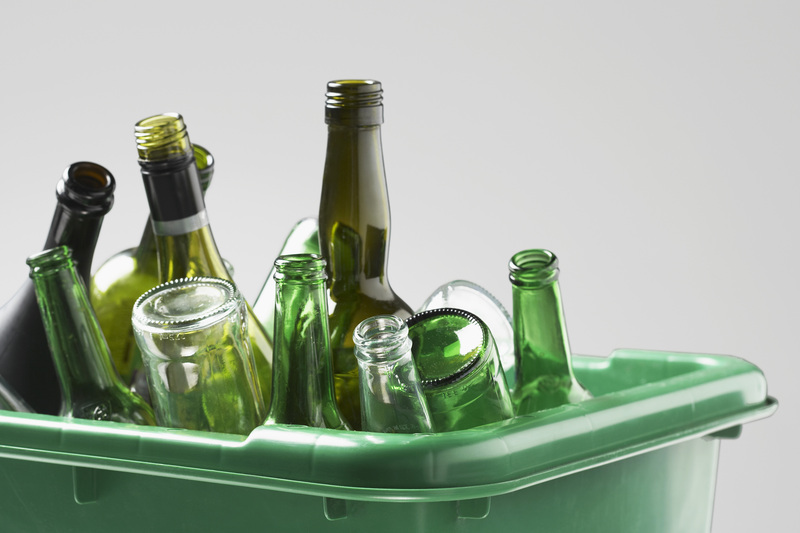How to Keep PPE Waste Out of Landfills and Oceans
The surge in usage of personal protective equipment (PPE), such as face masks, gloves, and face shields, especially since the COVID-19 pandemic, has caused a dramatic increase in waste worldwide. Millions of disposable PPE items are discarded each day, leading to significant environmental concerns as they end up in landfills, oceans, and other ecosystems. This article explores effective solutions, innovative recycling techniques, and actionable tips on how to keep PPE waste out of landfills and oceans. By adopting these strategies, communities, organizations, and individuals can join the global effort to protect the environment.
Understanding the PPE Waste Crisis
PPE has become an essential barrier against disease and contamination. However, the majority of PPE - including surgical masks, gloves, and gowns - is designed for single use and made from non-biodegradable plastics like polypropylene. This leads to significant environmental issues.
- Landfills: PPE contributes to the ever-growing problem of solid waste. In landfills, these plastics can take hundreds of years to decompose.
- Oceans: An estimated 1.56 billion face masks entered the oceans in 2020 alone. Marine life can ingest or become entangled in PPE debris, causing injuries or fatalities and impacting the broader ecosystem.
- Microplastics: Over time, discarded PPE breaks down into microplastics, which can contaminate water and enter the food chain.
Given the scale of this issue, it is crucial to explore PPE waste management solutions and promote sustainable behavior.

Why PPE Waste Management Matters
- Environmental Protection: PPE pollution harms biodiversity and damages sensitive marine and terrestrial habitats.
- Public Health: Improper disposal can spread pathogens and contaminants, posing risks to sanitation workers, wildlife, and entire communities.
- Sustainable Future: Reducing PPE waste aligns with the global push for sustainable development and a circular economy.
Best Practices for PPE Waste Reduction
1. Choose Reusable PPE When Possible
Not all PPE needs to be single-use. Where safe and practical, opt for reusable PPE. Cloth masks and washable gowns can significantly diminish waste when maintained and sanitized properly. Institutions and businesses can adopt protocols that favor reusable alternatives without compromising safety.
- Select certified reusable PPE approved for your intended use.
- Establish cleaning and disinfection routines to maintain integrity and safety.
- Promote the use of reusable face masks among the public for non-medical purposes.
2. Education and Awareness Campaigns
Many PPE items end up in the trash due to a lack of information on proper disposal or recycling channels. Educational campaigns can dramatically improve PPE disposal behaviors.
- Inform communities about the environmental impacts of improper PPE disposal.
- Encourage responsible habits like bringing used PPE home for safe disposal or recycling.
- Use signage and public messaging in offices, schools, and public spaces.
3. Establish Separate PPE Waste Bins
Providing clearly labeled bins for PPE disposal in workplaces, hospitals, transportation hubs, parks, and city streets helps prevent PPE from contaminating regular waste.
- Use color-coded or easily recognizable containers for used masks and gloves.
- Develop systems to regularly empty and decontaminate bins.
- Educate the public on why these bins are essential and how to use them.
PPE Recycling and Upcycling Initiatives
1. PPE Recycling Programs
Emerging recycling programs are specifically designed for personal protective equipment waste. Specialized recycling facilities can process single-use masks, gloves, and face shields into new materials for products like furniture, construction materials, or even energy sources.
- Partner with companies or organizations that offer PPE recycling solutions.
- Collect PPE separately and ensure it reaches appropriate recyclers.
- Advocate for local governments to support and fund these initiatives.
2. Innovation in PPE Design and Materials
The development of biodegradable PPE is gaining momentum. New products made from plant-based polymers or compostable materials can reduce long-term pollution risks.
- Support research into biodegradable alternatives and advocate for their adoption.
- Choose suppliers committed to sustainable design and material innovation.
Safe and Responsible PPE Disposal
1. Proper PPE Disposal at Home and Work
Everyone plays a role in keeping PPE out of oceans and landfills. Basic guidelines include:
- Do not litter masks or gloves in public spaces.
- Bag used PPE securely before placing it in designated bins to prevent it from being blown away or spreading contaminants.
- Never flush PPE down toilets or drains, as it will likely end up in water systems.
2. Steps for Medical and Hazardous Waste Management
Healthcare facilities handle significant volumes of PPE waste that may be contaminated. Following strict protocols is essential:
- Use clearly labeled bags and containers for different types of medical waste.
- Work with licensed medical waste management companies for safe processing and disposal.
- Train staff on PPE waste segregation and hygiene practices.
Engaging Communities and Organizations
1. Employer Responsibility
Businesses and organizations can make a substantial difference in minimizing personal protective equipment waste:
- Provide staff with guidelines and resources for responsible PPE disposal.
- Set up dedicated PPE recycling stations in the workplace.
- Collaborate with local authorities and sustainability organizations for better waste management.
2. School and University Programs
Educational institutions are in a unique position to teach the next generation about the environmental impacts of PPE and sustainable practices:
- Integrate environmental education about PPE waste into curricula.
- Organize PPE recycling drives and awareness events.
- Encourage students and staff to use reusable PPE where safe.
3. Community Cleanups
Organizing or participating in local cleanup events is a hands-on way to remove improperly disposed PPE from streets, parks, rivers, and beaches before it reaches ecological hotspots like oceans:
- Partner with environmental groups for wider community engagement.
- Ensure proper handling and safety protocols during cleanup to avoid contamination.
- Use the opportunity to educate participants and observers on long-term solutions.
Policies and Regulations for Better PPE Waste Management
1. Government Action
Policy changes and regulatory frameworks play a vital role in addressing the PPE waste challenge:
- Enforce proper labeling and collection of PPE waste at the municipal level.
- Encourage manufacturers to use sustainable materials and design products with end-of-life in mind.
- Expand funding and support for research, recycling, and treatment technologies.
2. Bans and Incentives
Some countries and cities have enacted temporary bans on single-use plastics and provided incentives for sustainable products. Expanding such measures to include PPE can have a powerful effect on waste reduction.
- Offer tax breaks or financial incentives for companies producing biodegradable PPE.
- Impose penalties for organizations that improperly dispose of large volumes of PPE.
- Support pilot projects to test new waste treatment technologies.
Innovative Technologies for PPE Waste Management
1. Advanced Recycling Techniques
New technologies are being adopted to convert PPE waste into usable materials or energy, mitigating the pressure on landfills and the risk of ocean pollution:
- Chemical Recycling: Breaks down plastic polymers in PPE for use in new products.
- Pyrolysis: Converts PPE waste into fuel by heating it in the absence of oxygen.
- Mechanical Recycling: Shredded PPE is remanufactured into items like outdoor furniture or construction panels.
2. Smart Waste Collection and Sorting
AI-enabled and sensor-based bins can help communities identify and sort PPE waste more efficiently, ensuring it is directed to appropriate facilities rather than discarded with general rubbish. These systems track waste patterns and optimize collection routes, resulting in less environmental leakage.

Tips for Individuals: How to Prevent PPE Pollution
- Always dispose of PPE in designated bins--never litter masks, gloves, or face shields.
- Reuse PPE when and where safe to do so; choose reusable cloth masks whenever possible.
- Spread awareness to friends and family about the impact of PPE pollution.
- Participate in or organize local clean-up efforts to remove littered PPE from public areas.
- Support brands and businesses that use sustainable or recyclable PPE.
Conclusion: Moving Toward a Greener Future
Tackling the PPE waste problem is a shared responsibility. By combining prevention, proper disposal, recycling, and technological innovation, we can keep PPE waste out of landfills and oceans. From individuals making small daily choices to policy makers driving systemic change, every step counts. The health of our planet and future generations depends on what we do today.
Let's work together to protect our ecosystems, reduce PPE pollution, and move toward a cleaner, more sustainable world.
```